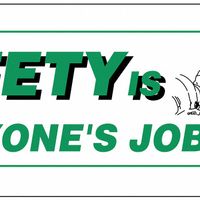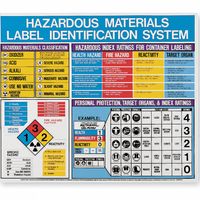Call +(254) 703 030 000 / 751 483 999 / 721 704 777
- Home
- Safety
- Signs Facility Identification Products
- Safety Facility Banners Posters Mirrors
.....Read More
Frequently Asked Questions
What are the benefits of using safety and facility banners in the workplace?
Safety and facility banners in the workplace offer numerous benefits that enhance both safety and operational efficiency. Firstly, they serve as constant visual reminders of safety protocols, helping to reinforce safe practices and reduce the likelihood of accidents. By clearly displaying safety instructions, emergency procedures, and hazard warnings, these banners ensure that employees are consistently aware of potential risks and the necessary precautions to take.
Moreover, facility banners contribute to better organization and navigation within the workplace. They can be used to mark specific areas, such as exits, restrooms, or restricted zones, thereby facilitating smooth movement and reducing confusion, especially in large or complex facilities. This is particularly beneficial during emergencies, where clear signage can guide employees to safety quickly and efficiently.
Additionally, safety and facility banners can be customized to address specific workplace needs, ensuring that the information is relevant and targeted. This customization can include language preferences, industry-specific symbols, or company branding, which can enhance employee engagement and compliance.
Furthermore, these banners can play a role in fostering a culture of safety and accountability. By prominently displaying safety messages and company values, they remind employees of their responsibility towards maintaining a safe work environment. This can lead to increased morale and a sense of shared responsibility among staff.
Lastly, the use of safety and facility banners can have a positive impact on a company’s reputation. Demonstrating a commitment to safety and organization can enhance the perception of the company among clients, partners, and regulatory bodies, potentially leading to increased business opportunities and compliance with legal standards.
How do safety posters help in reducing workplace accidents?
Safety posters play a crucial role in reducing workplace accidents by serving as constant visual reminders of safety protocols and potential hazards. They help in several ways:
1. **Awareness and Education**: Safety posters provide essential information about workplace hazards, safety procedures, and emergency protocols. They educate employees on the correct use of equipment, proper handling of materials, and the importance of personal protective equipment (PPE).
2. **Reinforcement of Safety Culture**: By consistently displaying safety messages, posters reinforce the organization's commitment to safety. This helps in cultivating a safety-first mindset among employees, encouraging them to prioritize safety in their daily tasks.
3. **Visual Impact**: The strategic placement of safety posters in high-traffic areas ensures that safety messages are seen frequently. The use of bright colors, bold text, and clear images captures attention and makes the information more memorable.
4. **Behavioral Influence**: Posters can influence behavior by reminding employees of the consequences of unsafe practices and the benefits of adhering to safety guidelines. This can lead to a reduction in risky behaviors and promote safer work habits.
5. **Compliance and Accountability**: Displaying safety posters can help ensure compliance with occupational safety regulations. They serve as a reminder of legal obligations and can be used to hold employees accountable for following safety procedures.
6. **Emergency Preparedness**: Posters that outline emergency procedures, such as evacuation routes and first-aid instructions, prepare employees to respond effectively in case of an emergency, potentially reducing the severity of accidents.
In summary, safety posters are an effective tool for promoting a safe work environment by educating, reminding, and motivating employees to adhere to safety standards, ultimately reducing the likelihood of workplace accidents.
What types of messages are typically displayed on safety mirrors?
Safety mirrors, often used in workplaces, public areas, and traffic environments, typically display messages that enhance awareness and promote safety. These messages can include:
1. **Cautionary Messages**: Warnings about potential hazards, such as "Watch Your Step," "Caution: Blind Spot," or "Proceed with Caution."
2. **Directional Instructions**: Guidance on movement, like "Keep Left," "Use Other Door," or "Exit This Way."
3. **Safety Reminders**: General safety advice, such as "Wear Protective Gear," "Check Surroundings," or "Stay Alert."
4. **Informational Notices**: Details about the environment, like "Two-Way Traffic," "Forklift Crossing," or "Pedestrian Zone."
5. **Emergency Instructions**: Directions for emergencies, such as "Fire Exit Route," "Emergency Assembly Point," or "In Case of Emergency, Call 911."
6. **Prohibitive Signs**: Restrictions to ensure safety, like "No Entry," "Do Not Block," or "No Parking."
7. **Reflective Warnings**: Messages that utilize the mirror's reflective surface to catch attention, such as "Objects in Mirror Are Closer Than They Appear."
These messages are designed to be clear, concise, and easily visible to ensure they effectively communicate the necessary information to prevent accidents and enhance safety.
How often should safety posters and banners be updated?
Safety posters and banners should be updated regularly to ensure they remain effective and relevant. The frequency of updates can depend on several factors:
1. **Regulatory Changes**: Update immediately when there are changes in safety regulations or standards to ensure compliance.
2. **Workplace Changes**: Update whenever there are significant changes in the workplace, such as new equipment, processes, or materials that introduce new hazards.
3. **Incident Analysis**: After an accident or near-miss, review and update safety materials to address any identified gaps or to reinforce safety messages.
4. **Scheduled Reviews**: Conduct regular reviews, at least annually, to ensure the information is current and effective. This can be part of a broader safety audit.
5. **Employee Feedback**: Update based on feedback from employees who may identify outdated information or suggest improvements.
6. **Visual Wear and Tear**: Replace posters and banners that are damaged, faded, or otherwise illegible to maintain visibility and impact.
7. **Seasonal Changes**: Update for seasonal safety issues, such as heat stress in summer or slip hazards in winter.
8. **Industry Best Practices**: Stay informed about industry best practices and update materials to incorporate new safety strategies or technologies.
By considering these factors, organizations can maintain effective safety communication that promotes a safe working environment.
What are the best practices for placing safety banners and posters in a facility?
1. **Visibility**: Place banners and posters at eye level in high-traffic areas to ensure maximum visibility. Use bright colors and bold fonts to attract attention.
2. **Relevance**: Position them near relevant hazards or equipment. For example, place fire safety posters near fire extinguishers and emergency exits.
3. **Clarity**: Use clear, concise language and universally recognized symbols. Avoid technical jargon to ensure understanding by all employees.
4. **Durability**: Use materials that withstand environmental conditions such as moisture, heat, or sunlight, especially in outdoor or industrial settings.
5. **Regular Updates**: Keep content current. Replace outdated information and refresh designs periodically to maintain engagement.
6. **Consistency**: Maintain a consistent design theme across all safety materials to reinforce brand and message recognition.
7. **Accessibility**: Ensure that posters are accessible to all employees, including those with disabilities. Consider height, lighting, and potential obstructions.
8. **Reinforcement**: Use posters to complement other safety training and communication methods. They should reinforce messages delivered in training sessions.
9. **Feedback**: Encourage employee feedback on the effectiveness of safety messages and adjust accordingly.
10. **Compliance**: Ensure that all safety communications comply with local regulations and industry standards.
11. **Multilingual Options**: In diverse workplaces, provide translations to accommodate non-native speakers.
12. **Engagement**: Use interactive elements or QR codes linking to digital resources for more in-depth information.
13. **Strategic Placement**: Position them at decision points, such as near machinery controls or entry points to hazardous areas, to prompt safe behavior.
14. **Maintenance**: Regularly inspect and maintain the condition of banners and posters to ensure they remain legible and effective.
How can safety messaging be made more effective for workers?
To make safety messaging more effective for workers, it is crucial to focus on clarity, engagement, relevance, and reinforcement.
1. **Clarity**: Use simple, direct language and avoid technical jargon. Messages should be concise and easy to understand, ensuring that all workers, regardless of their literacy level or language proficiency, can grasp the information.
2. **Engagement**: Utilize interactive methods such as workshops, simulations, and role-playing exercises. Engaging workers actively helps in better retention of safety protocols. Incorporate visual aids like infographics, videos, and posters to cater to different learning styles.
3. **Relevance**: Tailor messages to specific job roles and environments. Workers are more likely to pay attention to safety information that directly applies to their daily tasks and potential hazards they face.
4. **Reinforcement**: Regularly repeat and update safety messages to keep them fresh in workers' minds. Use reminders through various channels such as emails, text messages, or digital displays in common areas.
5. **Feedback Mechanism**: Encourage workers to provide feedback on safety messages and practices. This can help identify gaps in understanding and improve the overall safety communication strategy.
6. **Leadership Involvement**: Ensure that management visibly supports and participates in safety initiatives. When leaders prioritize safety, it underscores its importance to the workforce.
7. **Cultural Sensitivity**: Consider cultural differences and language barriers. Providing translations and culturally relevant examples can enhance understanding and compliance.
8. **Positive Reinforcement**: Recognize and reward safe behavior. Positive reinforcement can motivate workers to adhere to safety protocols consistently.
By integrating these strategies, safety messaging can become more impactful, leading to a safer workplace environment.
What regulations or standards govern the use of safety signage in workplaces?
The use of safety signage in workplaces is governed by various regulations and standards to ensure the safety and health of employees. In the United States, the Occupational Safety and Health Administration (OSHA) is the primary regulatory body. OSHA's regulations, particularly 29 CFR 1910.145, outline specifications for accident prevention signs and tags, including danger, caution, and safety instruction signs. These regulations specify the design, color, and placement of signs to ensure they are easily visible and understandable.
The American National Standards Institute (ANSI) also plays a significant role with its ANSI Z535 series, which provides guidelines on the design, application, and use of safety signs, colors, and symbols. ANSI Z535.1 to Z535.6 cover various aspects, including color codes, environmental and facility safety signs, product safety labels, and safety tags and barricade tapes.
In the European Union, the use of safety signage is governed by the Directive 92/58/EEC, which mandates the provision of safety and health signs at work. This directive requires signs to be clear, consistent, and standardized across member states, ensuring that they are easily recognizable and understandable by workers from different countries.
Internationally, the International Organization for Standardization (ISO) provides standards such as ISO 7010, which specifies safety signs' graphical symbols to ensure consistency and comprehension globally.
These regulations and standards ensure that safety signage effectively communicates hazards, guides safe practices, and complies with legal requirements, thereby reducing workplace accidents and injuries. Employers are responsible for implementing these standards to maintain a safe working environment.

